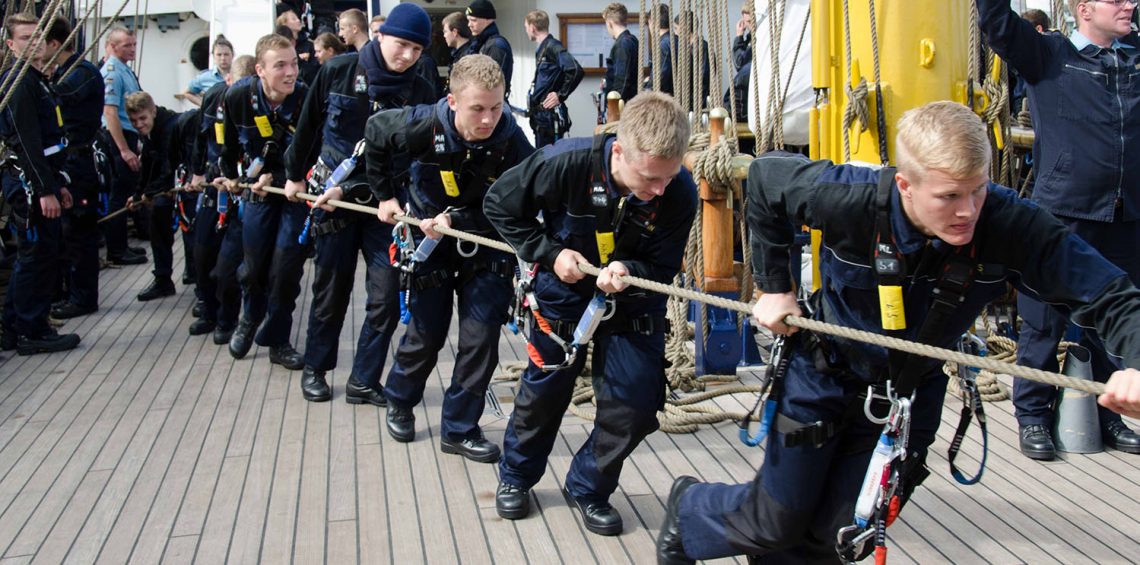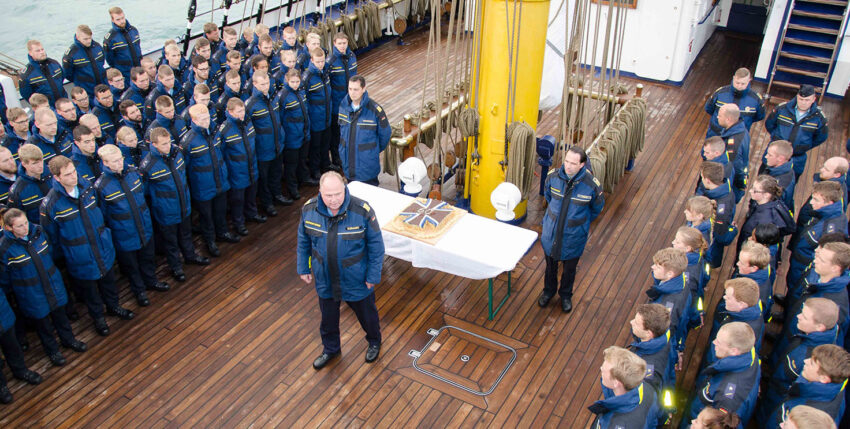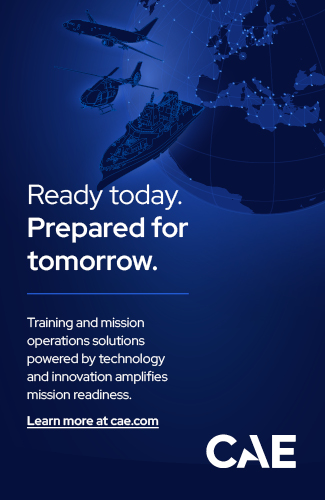It took almost six years for the shipyard to lay up the Gorch Fock. Why the sail training ship is still indispensable for training in the navy.
This article should actually be unnecessary, because the knowledge of the meaning and benefits of maritime and nautical training is part of the self-image of every naval officer. The discussions in recent years about the preservation of the Gorch Fock and the purpose of the training have also shown a different picture. The issue of the importance of sea-based training is also being prioritised in some places behind the joint training components for the armed forces. But what does the profession of naval officer actually entail and what training is required for it? The navy is seafaring, whether as the crew of a boat or ship, as an embarked shipboard task force or as a coastal operations company, as an on-board helicopter component or as medical personnel. As long as the navy still has boats and ships with crews, the requirements placed on the people on board will not change significantly. Precisely because the experience of seafaring seems to be less of a focus of training in the currently smallest fleet, the Gorch Fock as a sail training ship and as a training ship is an integral part of the training of the next generation of officers and non-commissioned officers and is of particular importance for basic sea-based training. An expression of this perception is also the statement made by some officer candidates on the last training voyages of the GORCH FOCK - "closer to the SKB from wave to wave".
Fortunately, the proponents have prevailed and ensured that the Gorch Fock and will therefore be available to the navy as a sail training ship for many years to come. The extensive repair of the Gorch Fock since 2016 was mainly due to the poor condition of the ship. Over 90 per cent of the hull, superstructure and rigging had to be replaced. This expansion of the scope of repairs was also the main reason for the associated increase in costs. In addition to these necessary repairs, the ship's technical systems were completely overhauled and parts such as fresh water generators and main switchboards were replaced. As part of the fleet-wide regeneration, the radio and navigation systems were also replaced with modern equipment. In addition, the air conditioning and ventilation systems were extended and hygiene improvements were implemented in the galley area. This work was carried out on the basis of the Solas regulations and other amended specifications. Ultimately, the Gorch Fock will go back into operation with a class equivalence certification and will therefore also be inspected by the certification organisation DNV in the future. Overall, the ship has not changed its appearance and has also retained its character, no marine gold rim wishes have been implemented and for the vast majority of people no differences will be recognisable.
The nautical training on the Gorch Fock is the young officer cadets' first point of contact with seafaring and the sea dimension as a major challenge in their future professional lives. With the Gorch Fock practical nautical training can also be ensured, as the ship belongs to the Mürwik Naval School and, in contrast to all other units of the German Navy, only a few competing demands are placed on it. The proportion of practical training has been significantly reduced in recent years and is visible in the characterisation and motivation for seafaring. The self-image that the navy means seafaring no longer seems to be firmly anchored in the minds of our young people. Joint training programmes, the armed forces base and the CIR offer welcome alternative uses and avoid the hardships and privations of seafaring. In addition, seafaring itself is not seen as a career-enhancing activity.

Most of the course participants come into contact with the challenge of seafaring for the first time on the Gorch Fock. They experience what it means to go to sea, what influence wind and water have on the ship, themselves and their mates. They learn to work in a team and realise that the tasks assigned to them on board can only be completed together. They get to know themselves and their limits in unusual, demanding situations. The Gorch Fock as a sailing classroom also shows that human interaction makes it possible to look at one's comrades from a different perspective, unadorned by virtual self-portrayal. This gives the terms camaraderie and team spirit a completely different meaning for some.
As early as 1962, Hans Freiherr von Stackelberg, later commander of the Gorch Fock, summarised the main values of sail training in five points, which remain almost unchanged to this day:
- The imparting of a nautical foundation that is strong enough to remain a secure armoury for all decisions despite being overlaid by concentrated technical training.
- Character training aimed at clearly recognising the value to be attached to the concept of teamwork.
- An expansion of the horizon.
- Representation abroad.
- The ship's remarkable promotional effect for the navy.
Even today, the following applies to the training of members of the navy
- imparting a basic understanding of the profession,
- practical training at sea,
- the seafaring experience and the communication of living and working conditions at sea,
- familiarisation with the effects of the elements at sea, in particular wind, swell and temperatures,
- learning the ability to assess the effect of the elements, the performance of the subordinate personnel and the entire crew in each assessment of the situation and to take this into account for planning, decision-making and giving orders
as essential components. Overall, young people should be moulded as part of a team at an early stage and experience their personal physical and mental limits. On board, they should experience team spirit and mutual dependencies between the leader and those being led, but also learn how to deal with their own abilities, strengths and weaknesses. And finally, the officer candidates can gain experience in the areas of communication and social behaviour, tolerance and acceptance as well as a sense of responsibility.
Of course, there have also been necessary and timely adjustments and changes. The selection of instructors and the training of instructors have taken on a different meaning. Training has been adapted and begins at the Naval Academy with training on the training mast and the issuing of the boarding authorisation for regular crew and training participants by the Commandant of the Naval Academy. However, new emphasis has also been placed on the trainees. The individualisation of young people shows the challenges of coping in and with the new environment on the training ship. The recommendation of the Pomeranian Commission to have a military chaplain accompany the pre-sailing training has proved its worth and is important in order to be able to mediate and provide human support.
The question posed at the beginning, whether a tall ship is in keeping with the times, has the same answer today as it did yesterday: nothing has changed, with the exception of the attitude of some questioners, those responsible and those involved. The awareness of the "why" has changed and with it the questioners.
Technical progress has not changed the force of nature. Facing the elements with humility, experiencing and understanding the forces of the sea, wind and weather is the prerequisite for good seamanship and modern ship management. Sail training ships are by no means romantic relics, but rather the technical basis for the profession of naval officer. The further development of technology has given us digital applications, state-of-the-art communication and precise equipment that our forefathers could only dream of. However, these achievements have not given us the ability to tame the forces. Of course, a modern tall ship also has modern nautical equipment - after all, it is a floating school. At the same time, however, it is also accommodation, but not a comfort zone. It is a cramped experience in which the community prevails over individual needs. And they experience what it means to be an ambassador for their country. Incessant critics must have observed that this ability is widespread internationally. The high value of these often hard-earned nautical miles is well remembered in the navies of the world.
In my estimation, the Gorch Fock will be available to the navy for at least another 25 years for the training of officer cadets after completion of the repairs, thus contributing to the crew spirit and moulding the character of the young people.
Captain Nils Brandt is in command of the training sailing ship Gorch Fock.











2 responses
I can only welcome the fact that the Gorch Fock can set sail again. As a former regular skipper (99th-101st AAR), it would have saddened me if this had not been the case
... as a retired naval officer and thus a "Gorch-Fock driver" (23rd AAR) I can fully agree with the comments.